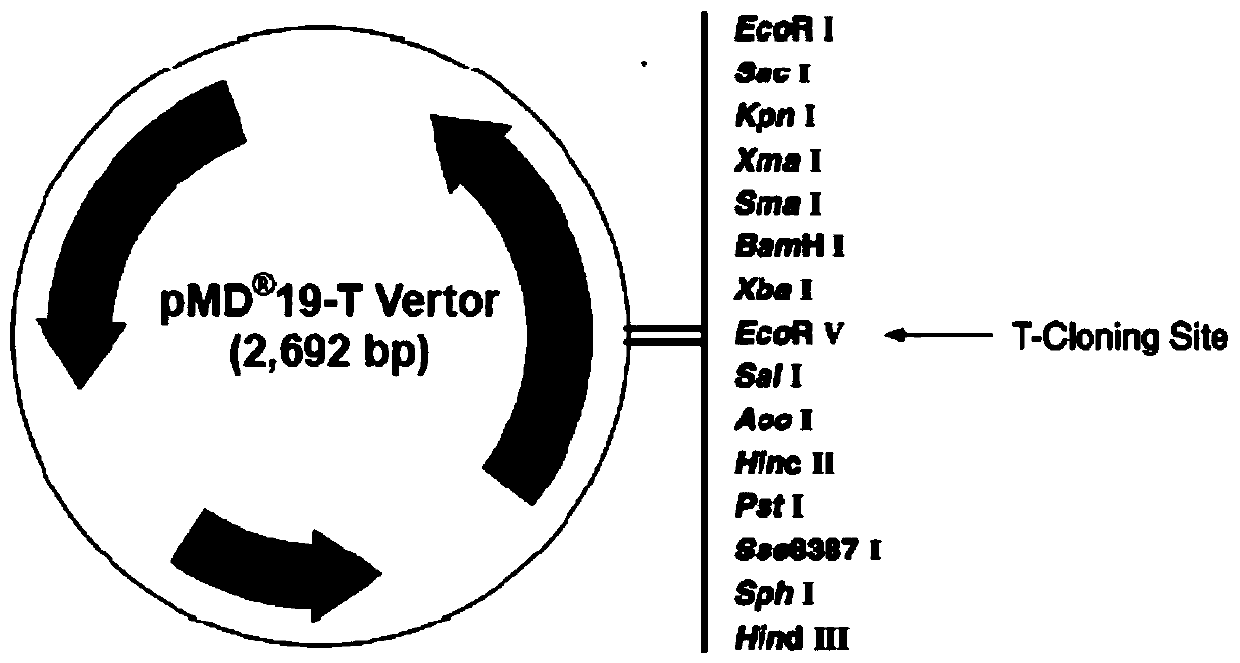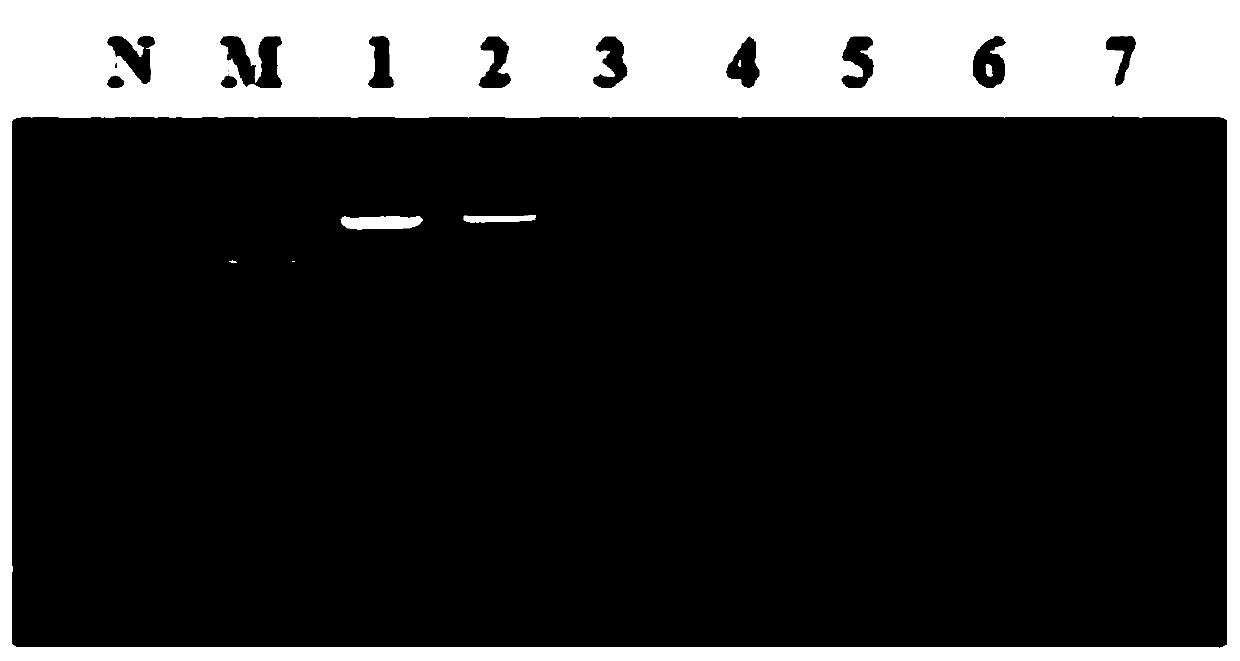Multiplex PCR kit for detecting 11 common food-borne pathogenic bacteria and application thereof
A food-borne pathogenic bacteria and kit technology, applied in recombinant DNA technology, microorganism-based methods, and microbial determination/inspection, etc. To reduce the incidence of food-borne diseases, control the spread of pathogenic microorganisms, and achieve the effects of accurate detection methods
- Summary
- Abstract
- Description
- Claims
- Application Information
AI Technical Summary
Problems solved by technology
Method used
Image
Examples
Embodiment 1
[0060] Extraction of Bacterial Genomic DNA
[0061] Genomic DNA of each bacteria (11 species) was extracted according to the instructions of the Bacterial Genomic DNA Extraction Kit (Product No. DP209-02) from QIAgen, and the steps are as follows.
[0062] 1) Aspirate 1-5ml of bacterial culture solution, centrifuge at 10,000 rpm for 5 min, and discard the supernatant as much as possible.
[0063] 2) Add 200 μL buffer solution GA to the cell pellet, shake until the cell is completely suspended. (For Gram-positive bacteria that are difficult to break, the second step can be skipped, and lysozyme is added to break the wall. The specific method is to add 180 μL enzyme solution (20 mM Tris·HCl, pH 8.0; 2 mM EDTA; 1.2 % Triton; final concentration 20 mg / ml lysozyme;), 37 ℃ for more than 30min.)
[0064] 3) Add 20 μL of ProteinaseK solution to the tube and mix well.
[0065] 4) Add 220 μL buffer solution GB, shake for 15 seconds, place at 70°C for 15 minutes, the solution should b...
Embodiment 2
[0138] For 11 common food-borne pathogens in my country (Salmonella, Listeria monocytogenes, Shigella flexneri, Escherichia coli O157, Vibrio parahaemolyticus, Staphylococcus aureus, Vibrio cholerae bacteria, Clostridium botulinum type A, Bacillus cereus, Clostridium perfringens, Yersinia enterocolitica) designed and established a "public primer" mediated multiplex PCR detection system (Universal primers mediated multiplex PCR, UP-M-PCR system) for system sensitivity and specificity testing, as well as actual sample testing. The UP-M-PCR system includes the public primers of SEQ ID NO.1, the chimeric primers of Table 9 and conventional PCR components to form a PCR kit mediated by public primers for the detection of eleven kinds of food-borne pathogens.
[0139] Pathogen detection target gene is crucial to the whole technology, the conservation, accuracy and specificity of the target sequence are directly related to the accuracy and specificity of pathogen detection, the specific...
Embodiment 3
[0162] Practical application evaluation of the system
[0163] The UP-M-PCR system of the present invention was used to detect 100 strains of food-borne pathogenic bacteria collected from the Suzhou Center for Disease Control and Prevention. After the selected strains were resuscitated with LB solid medium, the colonies were drawn out with a disposable cotton swab and placed in 1ml sterile saline for mixing to extract the bacterial genomic DNA. At the same time, the present invention is used to detect 60 anal swab samples collected from the Center for Disease Control and 16 food sample enrichment liquids collected from Suzhou Food Inspection Institute. For standard primer verification, see Table 10 for specific primer sequences. At the same time, the positive amplification products were sent to Jinweizhi for sequencing to verify the reliability of the results. The amplification system during UP-M-PCR system amplification is shown in Table 13, the amount of each primer in the...
PUM
| Property | Measurement | Unit |
|---|---|---|
| Tm value | aaaaa | aaaaa |
Abstract
Description
Claims
Application Information
 Login to View More
Login to View More - R&D Engineer
- R&D Manager
- IP Professional
- Industry Leading Data Capabilities
- Powerful AI technology
- Patent DNA Extraction
Browse by: Latest US Patents, China's latest patents, Technical Efficacy Thesaurus, Application Domain, Technology Topic, Popular Technical Reports.
© 2024 PatSnap. All rights reserved.Legal|Privacy policy|Modern Slavery Act Transparency Statement|Sitemap|About US| Contact US: help@patsnap.com










